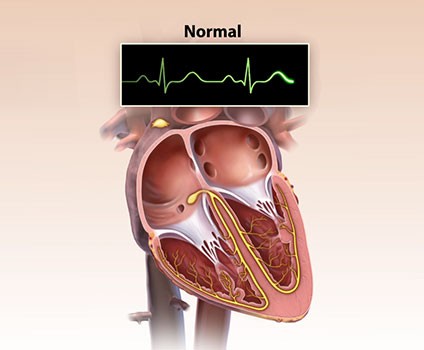
Long QT Syndrome
Long QT Syndrome is a condition that is characterized by a delay in repolarization of the heart after the initial depolarization and ventricular contraction. The electrical system of the heart normally functions in a pattern that causes the atria (upper chambers) and then ventricles (lower chambers) to contract. This pattern of normal electrical signasl produces a normal ECG with Q, R, S, and T waves (see fig. 1). In long QT syndrome, the electrical signals are delayed because the electrical system cannot recharge fast enough to carry a signal (see fig. 2). This condition increases the risk of a life-threatening arrhythmia known as ventricular tachycardia.
Figure 1: Normal ECG with normal QT interval.
Figure 2: ECG of a heart with long QT syndrome.
Visit UK HealthCare for more information.

